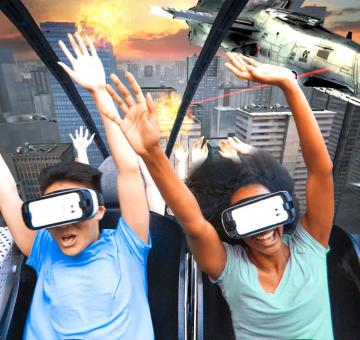5 Accessibility Features for Your Virtual Reality Game

Virtual Reality (VR) technology offers immersive experiences that captivate users and transport them to different worlds. However, the potential of VR can only be fully realized if it is accessible to individuals with disabilities. In this article, I will present some accessibility features and solutions that can make VR experiences inclusive and enjoyable for everyone.
1 – Auditory and Visual Cues for Checkpoints
Many VR experiences rely on visual and auditory cues to guide players. Incorporating features such as flashes of light or distinct auditory signals can be immensely helpful for individuals who are hard of hearing. These cues can indicate important checkpoints, events, or interactions within the VR environment. Keep in mind that flashing could trigger seizures for some users, so be careful with flashing lights, more about it later.
2 – Dyslexic-Friendly Fonts and Color Schemes
Toggle buttons that allow users to switch between dyslexic-friendly fonts and various color schemes cater to individuals with dyslexia and color vision deficiencies. Customizable color options for different types of color blindness, along with the option to switch to a greyscale mode for enhanced color contrast, contribute to a more inclusive experience.
3 – Mobility Mode for Navigation
Traditional VR navigation can be challenging for individuals with mobility impairments. Implementing a mobility mode that offers arrow-based navigation or voice commands in place of manual cursor movement enables greater accessibility. This ensures that individuals with limited physical movement can comfortably interact with VR environments.
4 – Cognitive Support Features
VR experiences can be overwhelming for individuals with cognitive disabilities. Providing an option to enable a clear game path with visual cues, arrows, and simplified explanations helps users follow the game’s narrative. Minimizing text-heavy instructions and incorporating user-friendly visuals can make the experience more enjoyable and comprehensible.
5 – Animation and Flashing Content Control
VR environments often include dynamic animations and flashing content, which can be problematic for users with sensitivities or conditions like epilepsy. An essential accessibility feature is the inclusion of toggle buttons to reduce or disable such effects. Additionally, adhering to guidelines, such as limiting flashing content to three seconds, enhances safety for all users.
Accessibility in VR is not merely an option; it’s a necessity to ensure that the technology’s potential is accessible and inclusive. By incorporating these disability-centric solutions and many more to come in the future, VR developers can make significant strides toward creating immersive experiences that are truly inclusive and cater to the diverse needs of all users.
- Image source: Gerd Altmann from Pixabay.






































































EgyptInnovate site is not responsible for the content of the comments